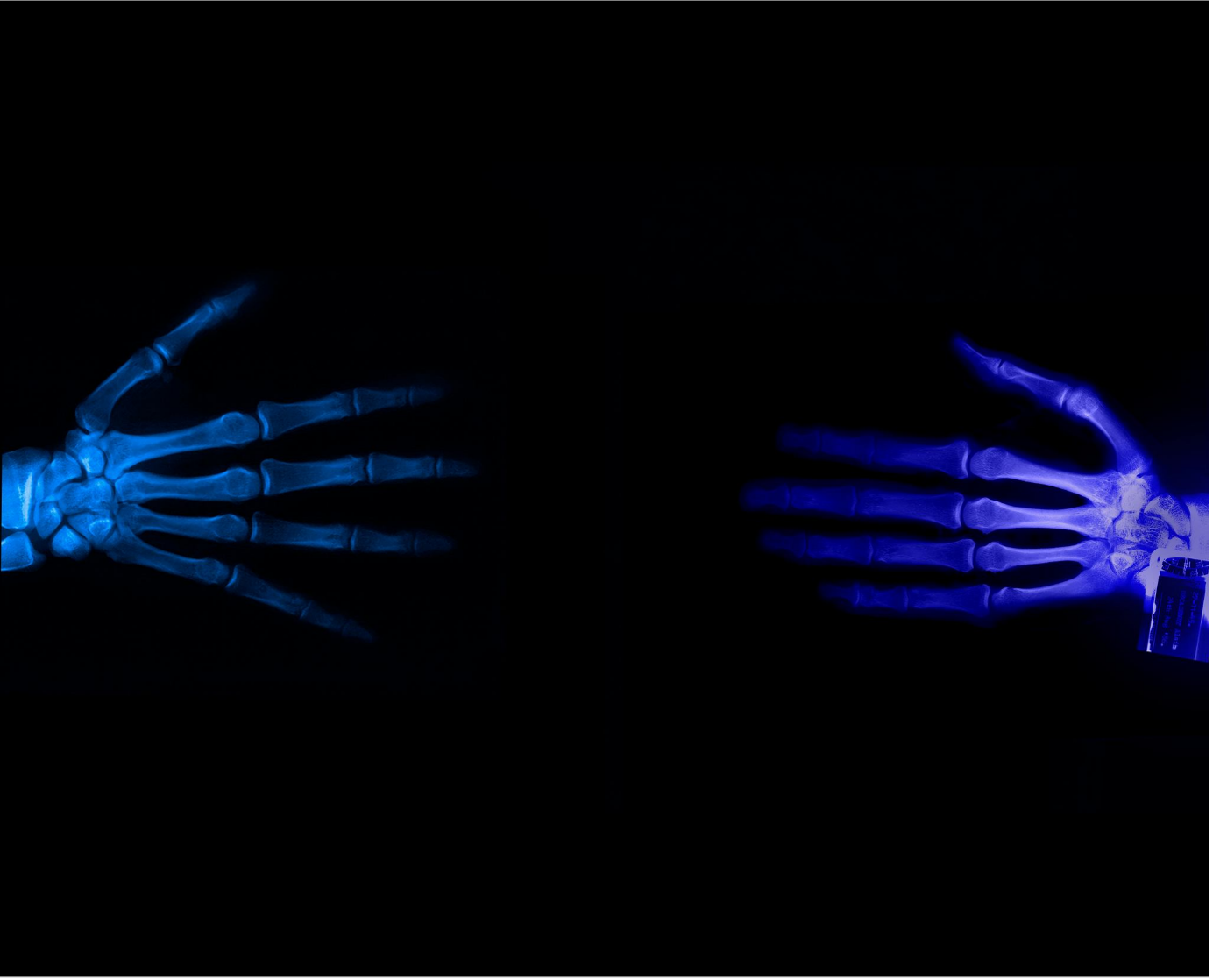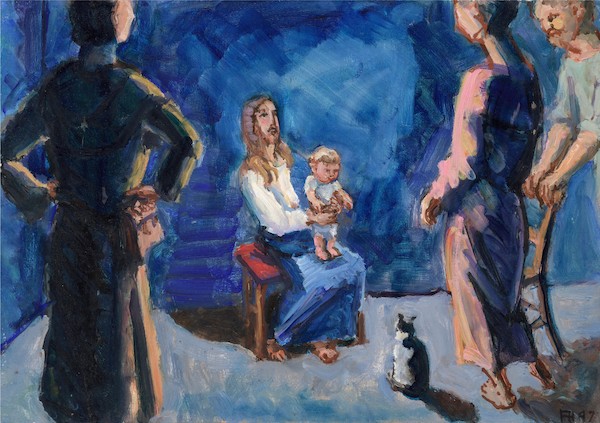It is unthinkable that the Reformation would have had little or no effect on the world of art. For Protestants the Mass as well as the choir music accompanying it had lost their significance. But along with that the altar – and therefore the altarpiece – also disappeared. Madonna statues and sculptures and paintings of saints all lost their meaning. Perhaps there were people who, after centuries of focusing their piety on these things, now discovered (by studying the Scriptures) that they had been given stones instead of bread. Sometimes they reacted in furious anger by throwing out the whole lot. At other times the reaction was much more peaceful. But in one way or another Roman Catholic cultic art disappeared. Kuyper was right when he wrote that art was set free from ecclesiastical domination, opening the way for other subjects and for a more domestic, intimate style of art – genre pieces, landscapes, still lifes, etc.
But it will not be sufficient to turn our attention only to the new subjects. The Reformation’s impact was more far-reaching and profound than effecting simply some thematic or theological changes. It encompassed an entirely new relationship with God the Father and God the Son, a completely new way of experiencing biblical truth. This, in turn, resulted in a new relationship with reality and life. The Reformation brought a profound renewal in both an emotional and an intellectual sense. It was not a revolution, in the sense of breaking with something; rather, it was a return to the fountain of Life, so that the healing waters could flow in.
These changes were not immediately apparent everywhere. It was not until the seventeenth century, after the complicated and confused period of the sixteenth century, after the new had consolidated and people found the time and the peace and quiet to build on it, that we see clear evidences of the transformation in the realm of art. This is not to say that in the early years of the Reformation there was no evidence of change. To the contrary. For already prior to Luther’s public declarations the spirit of the Reformation was apparent in a few artists. (In the same way, the art of the Counter-Reformation perhaps first became apparent in 1510 in the Stanze della Segnatura by Raphael which is now in the Vatican.)
When we think of the Reformation, we are inclined to turn to Dürer and his famous series of woodcuts of the Apocalypse created in 1498. The young genius, who quickly became world-renowned, accomplished in a convincing way the nearly superhuman task of illustrating the images and parables from the last book of the Bible, and he did so in a completely new spirit. He had little to build on – earlier pictures illustrating John’s Revelation were meagre attempts to capture visionary language in a pictorial way. Dürer accomplished this not only magnificently but also with incredible accuracy. His whole approach betrays a deep respect for the biblical text. He also demonstrated that such orthodoxy in no way hinders freedom and creativity. On the contrary, a freer, more open creation of the same high standard can hardly be found.
It is remarkable that this series of woodcuts, apart from the scene with the horsemen of the Apocalypse, is not well known in our circles. It seems that Dürer had an incredible respect for every single word of the text and left nothing out in his depiction of the scenes. In the woodcut portraying Revelation 10 we see an angel clothed with a cloud and with a rainbow on his head, his face shining as the sun, his feet like pillars of fire, with one foot on the earth and the other in the sea. The angel offers the prophet a little book, and then raises his hand to take an oath in the name of him who lives for ever and ever.
We notice that, contrary to the custom of his time, Dürer avoided portraying God but instead used the symbol of the ark of the covenant to depict him. The voice from heaven is portrayed as an angel speaking to the prophet. Notice how the prophet obediently follows the (other) angel’s instruction, takes the little book and eats it. No detail has been left out of the picture. Yet the whole does not become weird or bizarre. Thus, this Apocalypse series is the first monument of the Reformation in the world of art, and perhaps it is the most excellent monument of scripturally sound imaginative thinking ever created. What is amazing is that all of this could be accomplished in the depiction of the most difficult book of the entire Bible.
Dürer later on became a follower of Luther. A moving proof of this is the prayer he wrote in his diary in 1521 when he was in Antwerp. On the whole his diary is a dull summary of expenses and visits, but then, on the Friday before Pentecost, he received the news that Luther had been betrayed and captured. (He was not yet aware at this point that Luther had gone to the Wartburg.) What he wrote in response to that news, allowing his thoughts to roam freely, was of course not intended for publication. The text is difficult to translate, with thought piled upon thought.
An artist who is better known for his direct connection with the Reformation is Lucas Cranach, the creator of the famous Luther portraits and the tireless creator of numerous illustrations accompanying Luther’s writings as well as many pamphlets produced during this tumultuous time. Cranach started out as an important representative of the Danube school, a group of very expressionistic artists from the early sixteenth century. Their works were passionate and extravagant, expressing a deep spiritual crisis. It was almost as if the artists were trying to convince themselves of the truth of what they were saying by emphasizing it so loudly and vehemently. One of Cranach’s works of that period is his impressive woodcut entitled Gethsemane. Later, during his ‘Luther period’, he calmed down, while his rich fantasy diminished. Peace and calm and joy are the promises that the gospel proclaims. We see it clearly reflected in this art.
Another artist who showed that this could be accomplished without compromising the highest artistic quality and creativity was Albrecht Altdorfer from Regensburg. In his early period Altdorfer was also a passionate and fantastic representative of the Danube school, perhaps even its most important one. His drawing from 1511 showing an awkwardly positioned tree in the foreground and the Danube landscape in the background looks as if it might erupt like a volcano at any moment. In 1519 he supported the fervent, almost mass-hysterical veneration of the Beautiful Madonna, a work he had painted. On one of Altdorfer’s prints, which was sold to pilgrims as an indulgence, Dürer wrote: ‘This phenomenon appeared in Regensburg in opposition to the Scriptures. God help us not to dishonour his Holy Mother. Amen.’
But two years later Altdorfer copied Cranach’s well-known engraved portrait of Luther. From that time on, we see a clear movement towards greater peace and simplicity, without any compromising of his artistic creative power. Typical of his work of that period is his beautiful painting of a Danube landscape. It is one of the first free landscapes ever painted (not just a landscape as background to another subject). As such, it points clearly to the work of van Goyen and Ruysdael in the seventeenth-century Netherlands.
Altdorfer, who was a very prominent citizen in his town, never publicly converted to the Reformation. It was only after his death that his hometown in 1542 officially became Protestant. But we can certainly deduce a great deal from the fact that when he was dying in 1536 he asked to be buried in an Augustinian Church.
Did the Reformation mean anything for the world of art? We cannot go into this question in depth, but we can say with confidence that without it, the history of art would have taken a very different turn. The seventeenth-century art of our country [the Netherlands] and the art of southern Europe, where the Baroque art of the Counter-Reformation set the tone, would have looked totally different. Only those who believe that stylistic changes just occur, by themselves, would deny this. But in that case we would also not need to thank God for the great beauty that he allows to be created, as the fruit of true faith. For our part, we do not wish to deny him the praise he deserves.
Published in M. Hengelaar-Rookmaaker (ed.): H.R. Rookmaaker: The Complete Works 4, Piquant – Carlisle, 2003. Also obtainable as a CD-Rom.
%20(1).png)












